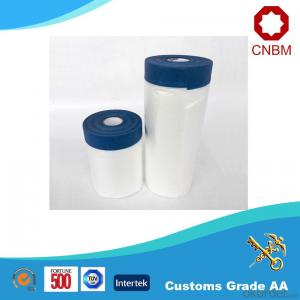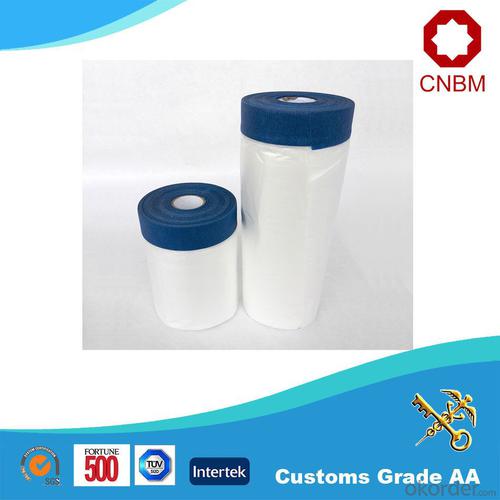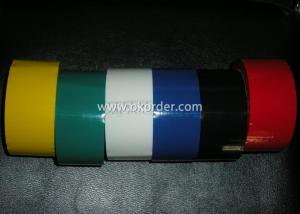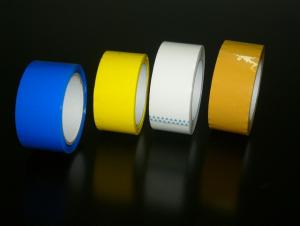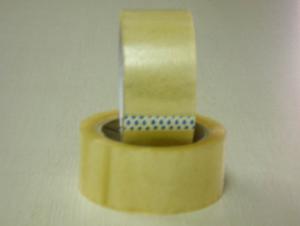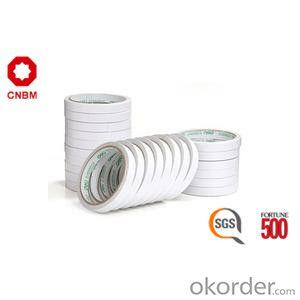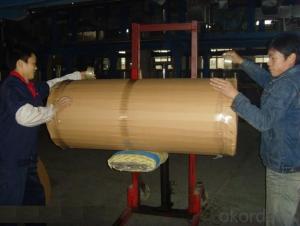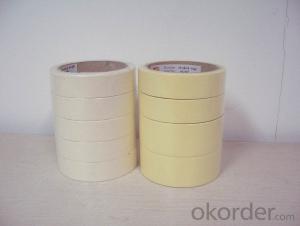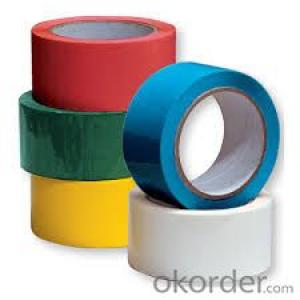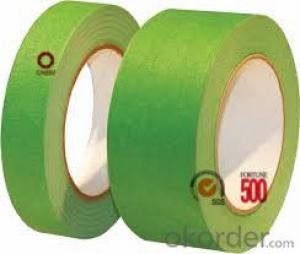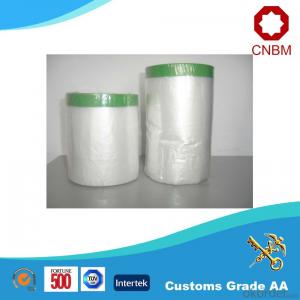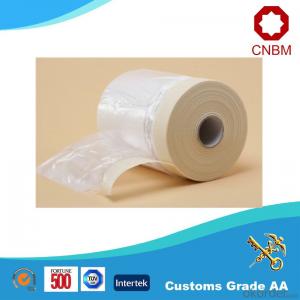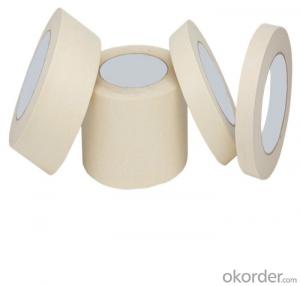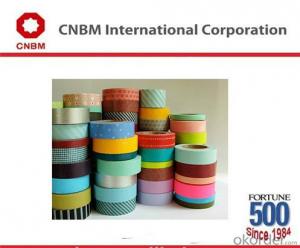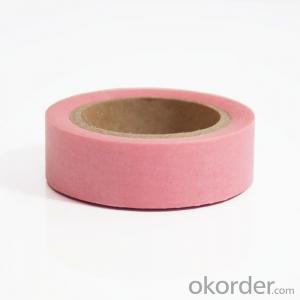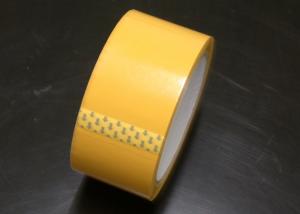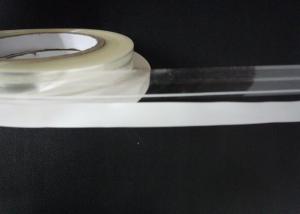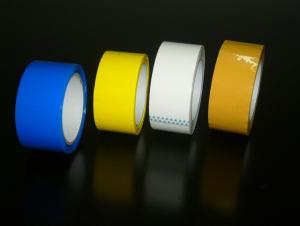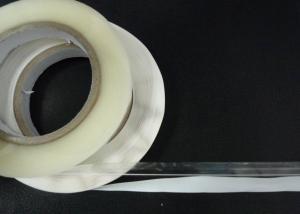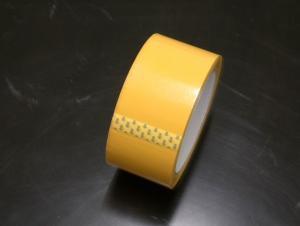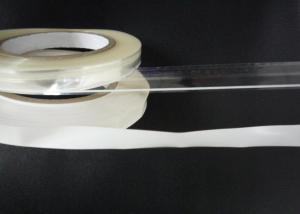Paper Tape Packaging Masking Film for Electronic and Auto Industry
- Loading Port:
- Qingdao
- Payment Terms:
- TT OR LC
- Min Order Qty:
- 3000 roll
- Supply Capability:
- 30000 roll/month
OKorder Service Pledge
OKorder Financial Service
You Might Also Like
Specification
Masking Film For Electronic And Auto Industry
1. Structure of Masking Film Description
Masking Film is of HDPE film and masking tape. A convenient, pretaped plastic film which unfolds to cover and protect various surfaces while painting. Specially treated film clings to surfaces and is easy to clean up.
2. Main Features of Masking Film
Multi-Folded easy to use
Indoor/outdoor painting
Strong and Flexible;
Competitive price
Sunlight stable even on glass
3. Masking Film Images
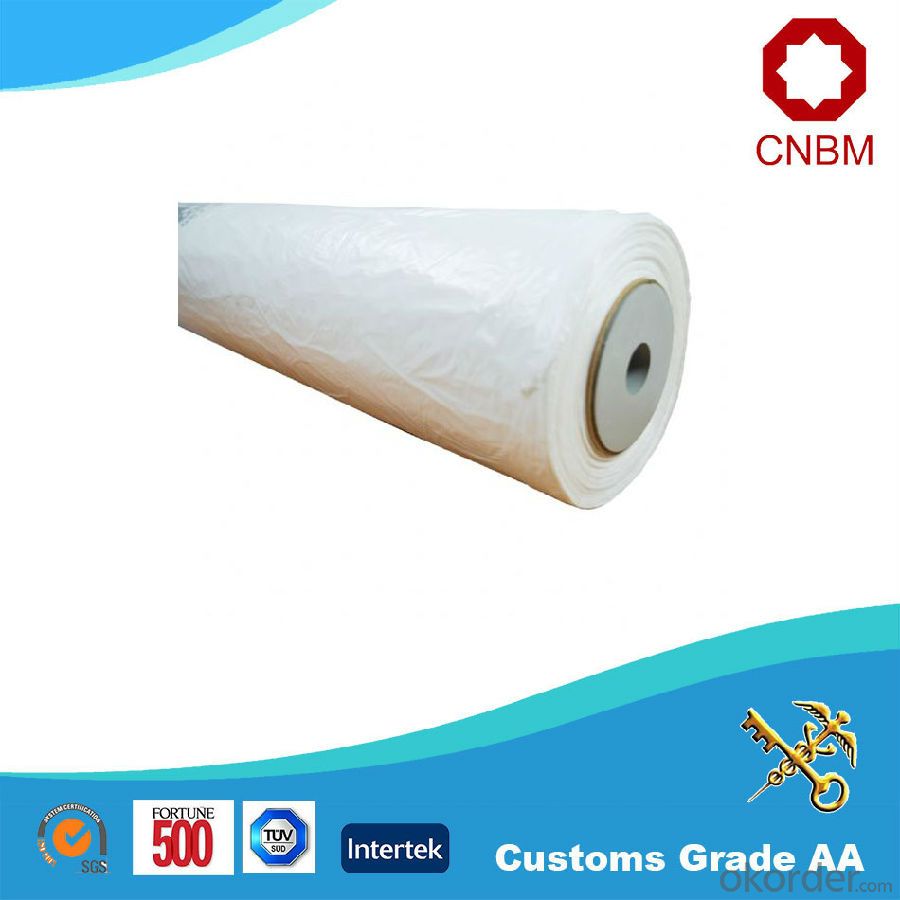
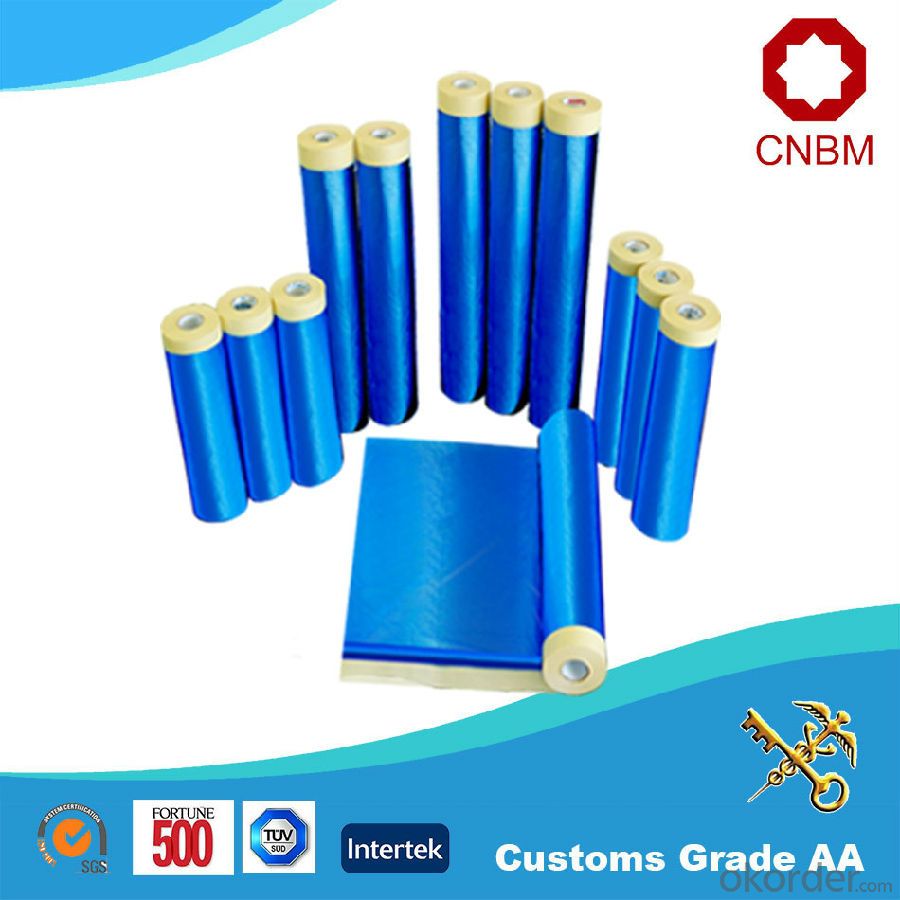
4. Masking Film Specification
Tape Size | Rolls/Carton | Weight/Roll(kg) | Jointing Material | Temperature Resistance |
330mm*30M | 20 | 0.12 | Crepe parer | -5—60°C |
550mm*30M | 50 | 0.17 | Crepe parer | -5—60°C |
1100mm*30M | 25 | 0.30 | Crepe parer | -5—60°C |
1400mm*30M | 10 | 0.39 | Crepe parer | -5—60°C |
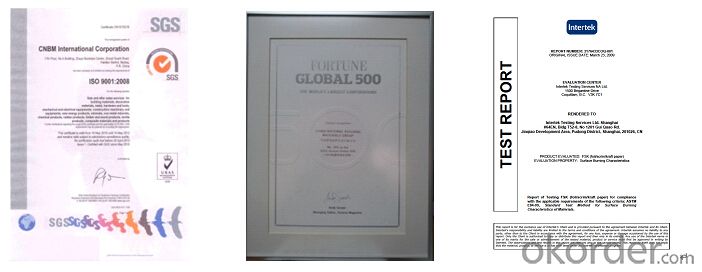


5. FAQ
Q1. What is the main size of masking film?
4mx2.5m,4mx5m, 4mx6m, 4mx8m, 4mx10m, 4mx12.5m, 2mx25m, 2mx50m
6ftx12ft, 8ftx12ft, 9ftx12ft, 10ftx20ft, 9x400ft
Q2. How to guarantee the quality of the products?
We have established the international advanced quality management system,every link from raw material to final product we have strict quality test;We resolutely put an end to unqualified products flowing into the market. At the same time, we will provide necessary follow-up service assurance.
Q3. How long can we receive the product after purchase?
In the purchase of product within three working days, We will arrange the factory delivery as soon as possible. The pecific time of receiving is related to the state and position of customers.Commonly 7 to 10 working days can be served.
- Q: Does packaging tape come in different lengths?
- Indeed, packaging tape does come in a variety of lengths. Diverse lengths of packaging tape are accessible to cater to distinct packaging requirements. Standard lengths for packaging tape comprise 55 yards, 110 yards, and 1000 yards, although additional lengths might also be obtainable. The length of the packaging tape you opt for is contingent upon the size and quantity of packages you intend to seal. It is crucial to take into account the required length of packaging tape to guarantee an adequate supply for securely sealing your packages, without the risk of running out.
- Q: Can packaging tape be used for sealing packages with liquid-filled containers?
- Packaging tape is not recommended for sealing packages with liquid-filled containers. While packaging tape is designed to secure boxes and packages, it is not specifically designed to handle liquids. Liquid-filled containers have a higher risk of leakage or spillage during transit, especially if they are not properly sealed. To ensure the safe transportation of liquid-filled containers, it is advisable to use specialized sealing methods such as shrink wrap, heat sealing, or pressure-sensitive adhesive tape specifically designed for liquid containers. These methods provide a more secure and leak-proof seal, minimizing the risk of damage or leakage during shipping.
- Q: How do I prevent packaging tape from losing its color over time?
- Here are a few strategies you can try to prevent packaging tape from losing its color over time: 1. Properly store the tape: To maintain its color for longer, keep your packaging tape in a cool, dark, and dry place, away from sunlight and extreme temperatures. 2. Avoid moisture: Moisture can damage the adhesive and color of the tape, so store it away from areas prone to water leaks or high humidity levels. 3. Opt for high-quality tape: Look for packaging tapes made with better quality materials that are designed to retain color for a longer period. 4. Minimize exposure to air: After use, seal the packaging tape tightly to reduce its exposure to oxygen, which can contribute to color degradation. 5. Handle with care: Rough handling can cause the color to rub off or fade faster, so be gentle when applying and removing the tape. 6. Consider protective coatings: If the packaging tape is important for branding or aesthetic purposes, you can explore using protective coatings or laminates to add an extra layer of protection against color loss. By implementing these measures, you can extend the lifespan and vibrancy of your packaging tape, ensuring it remains visually appealing for a longer period of time.
- Q: Can packaging tape be used for sealing packages for shipping?
- Yes, packaging tape can be used for sealing packages for shipping. Packaging tape is specifically designed to securely seal packages and keep them intact during transit. It provides a strong and durable bond that can withstand the rigors of shipping and handling. Whether you are shipping small or large packages, packaging tape is an essential tool to ensure that your items are properly sealed and protected during transportation.
- Q: What course of packing and cartons do we use for our company?
- Raw material ledger ledger should set the number of value type according to the material specifications, if material specifications more, in order to prevent errors but also in warehouse and category raw materials two accounts, two accounts only income issued andbalances amount, do not remember the number.
- Q: Are there different colors of packaging tape?
- In the market, one can find various colors of packaging tape. Although clear is the most commonly used color, there are also options like brown, white, black, and even vibrant choices such as red, blue, green, and yellow. The multiple colors of packaging tape serve different purposes. For instance, brown tape is frequently employed for sealing boxes and packages, white tape is commonly used for labeling or writing on, and colored tapes can be utilized for color-coding or enhancing the appearance of packages. The presence of diverse colors enables individuals and businesses to select the tape that best suits their specific requirements.
- Q: What are the considerations for using packaging tape on plastic packaging materials?
- When working with plastic packaging materials and using packaging tape, it is essential to keep several important factors in mind. These factors include: 1. Adhesive Compatibility: Ensuring that the adhesive used in the packaging tape is compatible with the specific type of plastic material is crucial. Different plastics have different surface properties, and they may require different adhesive formulations to ensure proper bonding. For instance, low surface energy plastics like polyethylene may necessitate a tape with a specially designed adhesive for such surfaces. 2. Strength and Durability: Plastic packaging materials come in varying thicknesses and strengths. When choosing packaging tape, it is important to consider the strength and durability required for the specific plastic material being used. The tape should be strong enough to securely hold the packaging together without tearing or breaking, thus maintaining the package's integrity during handling and transportation. 3. Temperature Resistance: Plastic packaging materials can be sensitive to temperature changes. If the package is exposed to extreme temperatures, such as heat or cold, the packaging tape should be capable of withstanding these conditions without losing its adhesive properties. Certain plastic materials may also shrink or expand due to temperature changes, which can impact the tape's adhesion. Therefore, it is important to select a tape suitable for the expected temperature range. 4. Residue and Damage: Some packaging tapes may leave behind adhesive residue or cause damage when removed from plastic packaging materials. This can pose a problem if the packaging needs to be reused or if the plastic material is susceptible to damage. By choosing a packaging tape that is designed to be easily removable or leaves minimal residue, these concerns can be mitigated. 5. Regulatory Compliance: Depending on the industry or product being packaged, there may be specific regulations and standards that must be followed. It is important to ensure that the packaging tape used complies with any applicable regulations, such as food safety standards or environmental requirements. By taking these factors into consideration, one can select the appropriate packaging tape that will effectively adhere to plastic packaging materials while also providing the necessary strength, durability, temperature resistance, and compliance with regulations.
- Q: How do I prevent packaging tape from losing its adhesive properties?
- To maintain the adhesive properties of packaging tape, there are several measures that can be taken: 1. Properly store the packaging tape: It is important to store the tape in a cool and dry location, away from direct sunlight or extreme temperature changes. Heat and moisture can gradually deteriorate the tape's adhesive properties. 2. Clean the surface prior to applying the tape: Ensure that the surfaces where the tape will be applied are clean and free from dust, dirt, and grease. Use a mild cleaning solution or rubbing alcohol to eliminate any substances that could compromise the tape's adhesive strength. 3. Apply the tape correctly: The proper application of the tape is essential for maintaining its adhesive properties. Press the tape firmly onto the surface, ensuring no air bubbles or gaps. Apply consistent and smooth pressure to achieve a strong bond. 4. Minimize excessive handling: Excessive handling of the tape can transfer oils and dirt from your hands to the adhesive side, diminishing its stickiness. Try to avoid touching the adhesive surface as much as possible. 5. Select the appropriate tape for the task: Different types of packaging tape are designed for specific purposes. It is crucial to use the tape that is suitable for your needs. For instance, if you are sealing heavy boxes, opt for a stronger and more durable tape. 6. Consider utilizing specialty tapes: If you are working in extreme conditions, such as high humidity or cold temperatures, it may be beneficial to use specialty tapes that are specifically designed to maintain their adhesive properties in these circumstances. 7. Use additional adhesives if necessary: In certain instances, additional adhesives may be required to ensure a robust bond. Double-sided tape or adhesive sprays can be utilized to reinforce the packaging tape if needed. By following these guidelines, you can help prevent the loss of adhesive properties in packaging tape, thereby ensuring secure and dependable packing and sealing.
- Q: Can packaging tape be used for sealing gardening or outdoor equipment?
- Yes, packaging tape can be used for sealing gardening or outdoor equipment. It provides a strong adhesive bond and can effectively seal boxes or other packaging materials used for storing or transporting gardening or outdoor equipment. However, it is important to consider the durability and weather resistance of the tape to ensure it withstands outdoor conditions.
- Q: Flexo printing tape, what are the common, what are the advantages and disadvantages?
- Flexo printing is a technology that uses flexible plates to transfer ink through anilox rollers to achieve printing. Compared with the traditional printing, offset printing, gravure printing and letterpress printing, flexographic printing plate making equipment has the advantages of less investment, short cycle, fast printing speed, the substrate adaptability, the use of environmentally friendly ink etc.. In the field of packaging and printing in Europe and America, the popularity of flexo printing is very high, and it can even reach 90% in the United states. With the progress of technology and the enhancement of environmental protection consciousness, the proportion of flexo printing in our country's printing industry has been increasing, and gradually become a popular printing technology.
Send your message to us
Paper Tape Packaging Masking Film for Electronic and Auto Industry
- Loading Port:
- Qingdao
- Payment Terms:
- TT OR LC
- Min Order Qty:
- 3000 roll
- Supply Capability:
- 30000 roll/month
OKorder Service Pledge
OKorder Financial Service
Similar products
Hot products
Hot Searches
